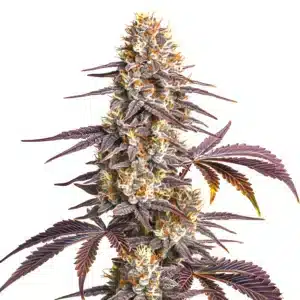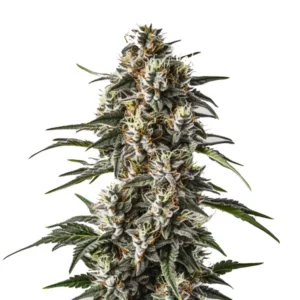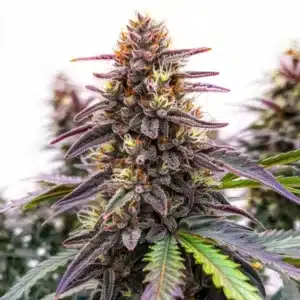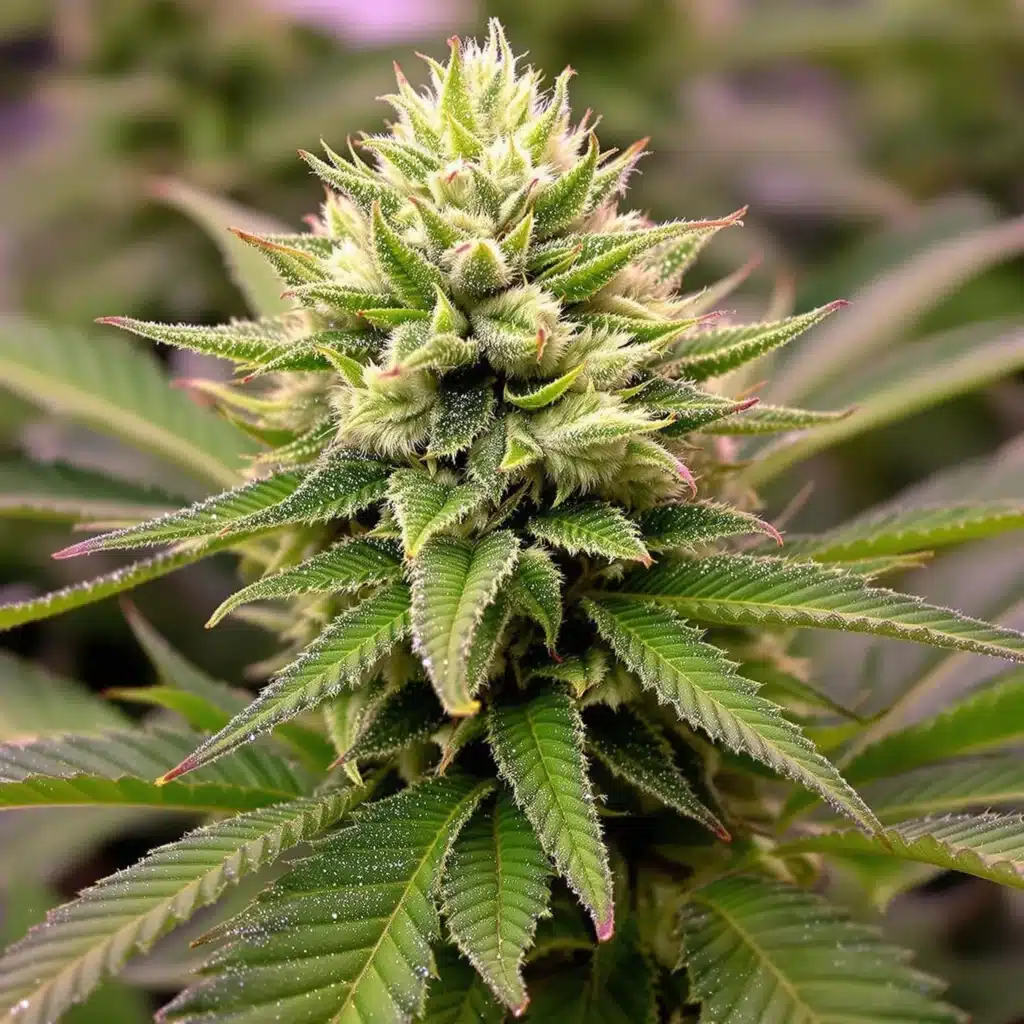
Boost Bud Density and Flavor: Bud Hardener Nutrients Explained
Bud Hardener Nutrients
What Are Bud Hardener Nutrients?
Bud hardener nutrients are specialized fertilizers designed to enhance the density, firmness, and overall quality of cannabis buds during the flowering stage. These nutrients typically focus on providing essential elements like phosphorus (P) and potassium (K), which are crucial for flower development.
Using bud hardener nutrients ensures your cannabis plants produce dense and potent flowers. They play a significant role in improving the structural integrity of buds, which is vital for achieving a high-quality harvest.
Recommended Strains
Cement Shoes
|
|
THC | 20% - 24% (Medium) |
|
|
Type | Feminized |
|
|
Yield | Medium |
|
|
Phenotype | 40% Indica / 60% Sativa |
Cement Shoes Regular
|
|
THC | 25% - 28% (High) |
|
|
Type | Regular |
|
|
Yield | High |
|
|
Phenotype | 65% Indica / 35% Sativa |
Why Are Bud Hardener Nutrients Important for Cannabis?
During the flowering phase, cannabis plants prioritize bud production. Bud hardener nutrients support this process by delivering targeted nourishment. They enhance cell division, increase resin production, and optimize flower density.
Without the proper nutrients, buds may develop loosely, affecting both potency and yield. Incorporating bud hardener nutrients into your feeding schedule is a strategic step toward maximizing your harvest’s potential.
Promos & Deals
Key Components of Bud Hardener Nutrients
Phosphorus and Potassium: The Power Duo
These nutrients are the backbone of any effective bud hardener. Phosphorus supports energy transfer within the plant, aiding in bud growth and root health. Potassium regulates water and nutrient uptake, ensuring plants remain healthy during peak flowering. Choosing the best bud hardener involves selecting formulas rich in these key nutrients to maximize bud density and overall quality.
This combination promotes dense, robust flowers that are rich in cannabinoids. Ensuring the right balance of these nutrients is key to achieving maximum yield and potency.
Micronutrients That Enhance Bud Density
Micronutrients like magnesium, calcium, and sulfur play a supporting role in bud development. Magnesium is essential for chlorophyll production, while calcium strengthens cell walls, contributing to firmer buds.
These micronutrients, though needed in smaller quantities, are crucial for preventing deficiencies that could impact overall flower quality. They work in harmony with phosphorus and potassium to create optimal conditions for growth.
Amino Acids and Carbohydrates
Amino acids and carbohydrates act as energy boosters during the flowering stage. This help plants produce proteins necessary for growth, while carbohydrates provide the energy required for bud development. Incorporating products enriched with these components ensures your cannabis plants have the resources to thrive, resulting in dense and flavorful buds.
Benefits of Using Bud Hardener Nutrients
Improved Bud Density and Size
Bud hardener nutrients significantly enhance bud density, creating compact, resinous flowers. This improvement not only increases the visual appeal of your harvest but also boosts its weight, directly impacting yield. The optimized nutrient formulation ensures each bud develops to its full potential, maximizing the overall harvest size and quality. These nutrients play a critical role in creating commercial-grade cannabis buds that meet market standards for size and density.
By optimizing cell division and strengthening plant structure, these nutrients ensure your cannabis plants produce buds that are both substantial and visually striking. A well-executed nutrient plan can transform mediocre flowers into dense, trichome-rich masterpieces, satisfying both personal and commercial cultivation goals.
Enhanced Trichome Production
Trichomes are the tiny, resin-filled glands responsible for cannabis’s potency and aroma. Bud hardener nutrients encourage trichome production, resulting in more potent and aromatic buds. Increased trichome density not only enhances the sensory experience but also contributes to the therapeutic potential of the cannabis. This leads to flowers that stand out in both recreational and medicinal markets.
Higher trichome density also means increased cannabinoid and terpene content, enhancing the overall quality of your cannabis. The amplified trichome production leads to a richer concentration of cannabinoids, catering to both medicinal and recreational users. For growers targeting premium markets, this added potency and aroma provide a competitive edge.
Boosted Terpene Profiles for Flavor and Aroma
The right nutrients during flowering amplify terpene production, giving your buds a richer and more complex flavor profile. This is particularly important for growers looking to cultivate cannabis with unique taste and aroma characteristics. The enhanced terpene profile creates a signature scent that distinguishes your strain from others, making it a favorite among connoisseurs.
Enhanced terpene profiles not only improve the sensory experience but also increase the therapeutic potential of your cannabis. For enthusiasts and connoisseurs, the depth and complexity of flavors add significant value to the final product. This makes the use of bud hardener nutrients essential for creating cannabis strains that leave a lasting impression.
When to Use Bud Hardener Nutrients
Optimal Timing During the Flowering Stage
Bud hardener nutrients should be introduced during the mid-to-late flowering stage when plants focus on bud development. This typically starts around week 4 or 5 of flowering and continues until the flushing period. Introducing these nutrients at the correct time ensures plants can efficiently utilize them for maximum bud development. Timing nutrient application effectively is key to optimizing results.
Applying nutrients too early or late can reduce their effectiveness. Timing is critical to ensuring your plants benefit fully from these specialized formulas. A well-timed feeding schedule ensures optimal results and prevents unnecessary stress on the plants. Growers who fine-tune their nutrient schedules often see significant improvements in bud quality and yield.
Early vs. Late Bloom: Adjusting Nutrient Applications
During the early bloom phase, lighter applications of bud hardener nutrients can help set the foundation for growth. In the late bloom stage, increasing phosphorus and potassium levels further enhances bud density and resin production. This gradual adjustment caters to the changing nutritional needs of the plant, supporting its development from flower initiation to maturity.
Adjusting nutrient concentrations based on the plant’s needs ensures consistent development and prevents nutrient burn. Monitoring plant response during each phase ensures optimal application and maximized results. A dynamic approach to feeding helps address the unique requirements of cannabis plants at each growth stage.
Top Types of Bud Hardener Nutrients

Organic Bud Hardener Options
Organic bud hardeners use natural ingredients like bat guano, kelp extract, and bone meal to provide essential nutrients. They are ideal for growers seeking eco-friendly solutions and better flavor profiles in their cannabis. Organic options enhance soil health, contributing to sustainable cultivation practices while maintaining high-quality outputs.
While organic options may work slower than synthetic counterparts, they offer long-term soil health benefits and reduce the risk of chemical residues. The natural approach supports a healthier growing ecosystem while delivering high-quality buds. This method aligns well with the principles of environmentally conscious growing.
Synthetic Bud Hardener Formulas
Synthetic bud hardeners are highly concentrated and deliver immediate results. They contain carefully calibrated amounts of phosphorus, potassium, and other essential elements. These formulas are designed for precision, making them a favorite among commercial growers seeking predictable outcomes and efficiency in production.
These formulas are excellent for growers looking for precise control and faster nutrient absorption. However, they require careful application to avoid overfeeding. Consistent monitoring ensures plants respond positively to synthetic inputs, allowing for a streamlined and effective cultivation process.
Liquid vs. Powdered Nutrients
Liquid bud hardeners are easy to mix and provide fast absorption, making them a popular choice for hydroponic systems. Powdered nutrients, on the other hand, offer longer shelf life and are cost-effective for large-scale operations. Each format has its advantages, catering to different grower preferences and operational needs.
How to Apply Bud Hardener Nutrients
Mixing and Measuring for Precise Applications
Accurate mixing is essential when applying bud hardener nutrients. Always follow the manufacturer’s guidelines to avoid underfeeding or overfeeding your plants. Proper mixing ensures an even nutrient distribution, which is critical for uniform plant growth and consistent results across your grow operation.
Using a digital scale or measuring cup ensures consistent results. Proper mixing prevents nutrient lockout and promotes even distribution. Precision in preparation maximizes nutrient effectiveness, ensuring plants receive exactly what they need without excess or deficiency.
Foliar Feeding vs. Soil Application: Which is Better?
Foliar feeding allows plants to absorb nutrients directly through their leaves, providing a quick boost during the flowering stage. Soil application, however, offers sustained nutrient release, supporting long-term growth. Both methods have their unique benefits, depending on the stage of plant development and the grower’s objectives.
Avoiding Nutrient Burn and Overfeeding
Overfeeding can lead to nutrient burn, characterized by browning leaf tips and stunted growth. To prevent this, start with lower concentrations and gradually increase as needed. Incremental feeding minimizes the risk of damaging sensitive plants and ensures healthy development throughout the flowering stage. Additionally, many growers ask, is bud hardener dangerous? When used correctly and as directed, bud hardeners are generally safe, but improper use or overapplication can stress plants, so caution is advised.
Regularly flushing your plants with pH-balanced water removes excess nutrients, keeping them healthy and productive. Flushing ensures nutrient uptake is optimized without harmful buildup. This practice supports vigorous growth and maximizes the impact of bud hardener nutrients.
Factors to Consider When Choosing Bud Hardener Nutrients
Compatibility with Growing Medium
The effectiveness of bud hardener nutrients depends on compatibility with your growing medium. For instance, coco coir may require higher calcium supplementation, while soil retains nutrients longer. Knowing your medium’s properties helps tailor nutrient applications for best results and optimal plant performance.
Understanding your medium’s characteristics ensures optimal nutrient absorption and prevents deficiencies. Proper pairing of nutrients and mediums creates a synergistic environment for plant health. This compatibility is crucial for achieving consistent and high-quality yields.
Strain-Specific Nutrient Needs
Different cannabis strains have unique nutrient requirements. Indicas, for example, may benefit from higher potassium levels, while sativas often thrive with balanced formulations. Recognizing these differences enables growers to customize feeding plans, aligning with the genetic predispositions of their plants.
Tailoring your nutrient mix to suit your strain’s genetics maximizes its yield and quality potential. A targeted approach ensures each strain achieves its genetic potential.
Budget and Quality of Products
High-quality nutrients often come at a premium price, but they deliver better results. Investing in reputable brands ensures consistent performance and minimizes the risk of contaminants.
Balancing cost with quality helps growers achieve excellent results without overspending. Smart investments in nutrients translate to better harvests and increased profitability. Strategic purchasing ensures long-term benefits and sustainable cultivation practices.
Tips for Maximizing the Effects of Bud Hardener Nutrients
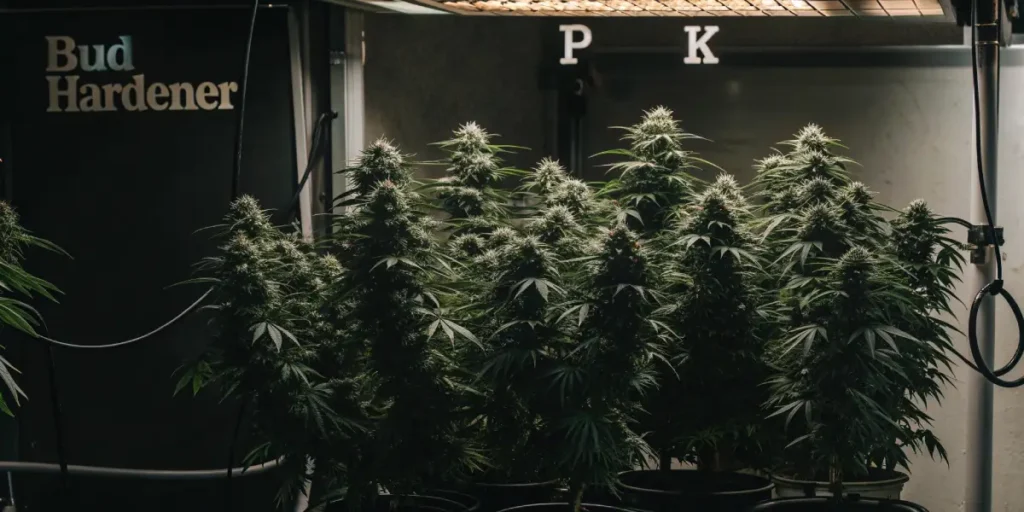
Combining with a Balanced Feeding Schedule
Bud hardener nutrients work best as part of a balanced feeding schedule. Combining them with base nutrients ensures plants receive a full spectrum of essential elements. Coordinated feeding enhances the plant’s overall health and productivity, promoting balanced growth and robust flowering.
Maintaining consistent feeding intervals prevents nutrient imbalances and supports overall plant health. A structured approach to feeding fosters continuous growth and robust buds. Regularly revisiting and refining your feeding schedule helps adapt to the dynamic needs of your plants.
Monitoring pH Levels and EC for Optimal Absorption
The pH of your water and nutrient solution should be within the ideal range (5.5-6.5 for hydroponics, 6.0-7.0 for soil) to prevent nutrient lockout. Regularly checking the electrical conductivity (EC) of your solution ensures appropriate nutrient concentration. Precise monitoring avoids common pitfalls of nutrient application and supports healthy growth.
Precise monitoring helps create the ideal environment for nutrient uptake, maximizing the impact of bud hardener nutrients. Monitoring tools simplify adjustments and maintain balance in your grow setup. This diligence contributes to the overall efficiency and success of your cultivation efforts.
Adjusting Environmental Conditions for Better Results
Temperature, humidity, and airflow play a critical role in nutrient effectiveness. Keeping these factors within optimal ranges prevents stress and enhances bud development. A controlled environment complements the benefits of bud hardener nutrients, creating conditions that promote vigorous growth.
A well-maintained grow environment amplifies the benefits of bud hardener nutrients, leading to superior yields. Environmental adjustments ensure plants thrive throughout their lifecycle.
FAQs About Bud Hardener Nutrients
What Makes a Nutrient a “Bud Hardener”?
A bud hardener nutrient contains high levels of phosphorus and potassium, along with supporting micronutrients, to enhance flower density and resin production. These nutrients are specifically formulated to strengthen and compact buds during flowering.
Are Bud Hardeners Suitable for All Cannabis Strains?
Yes, but results may vary depending on the strain. Indica-dominant strains tend to respond more noticeably to bud hardeners, while sativa strains may require tailored applications for optimal effects.
Can I Use Bud Hardeners with Other Bloom Boosters?
Yes, bud hardeners can complement other bloom boosters when used correctly. Ensure that the combined nutrient levels do not exceed recommended concentrations to avoid overfeeding and nutrient burn.




